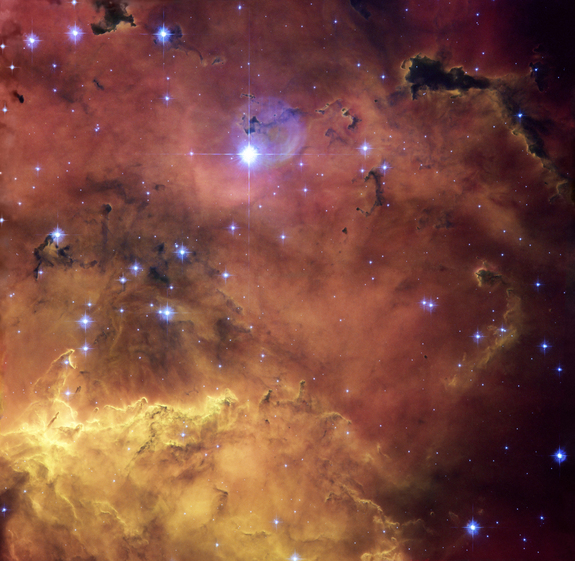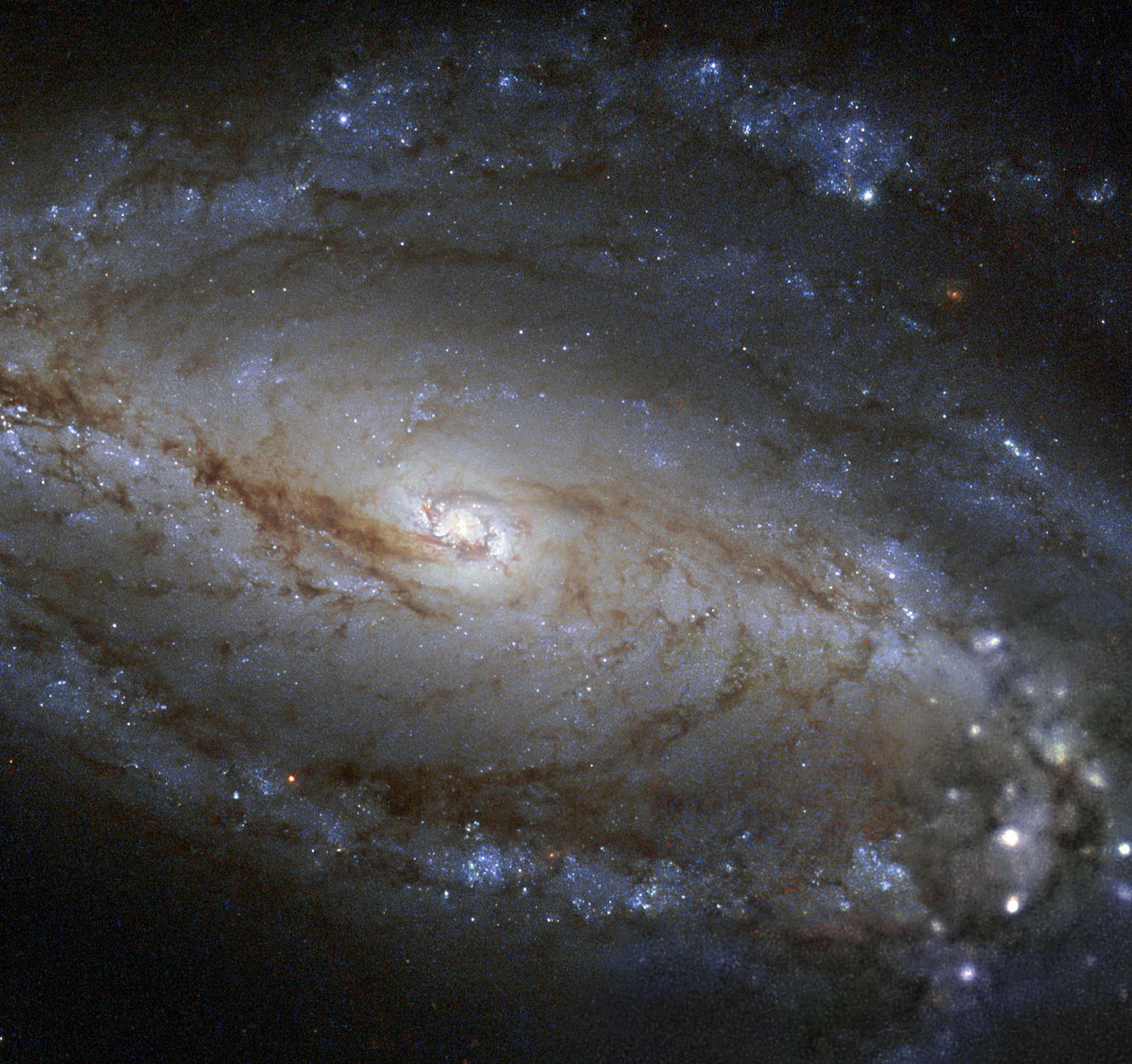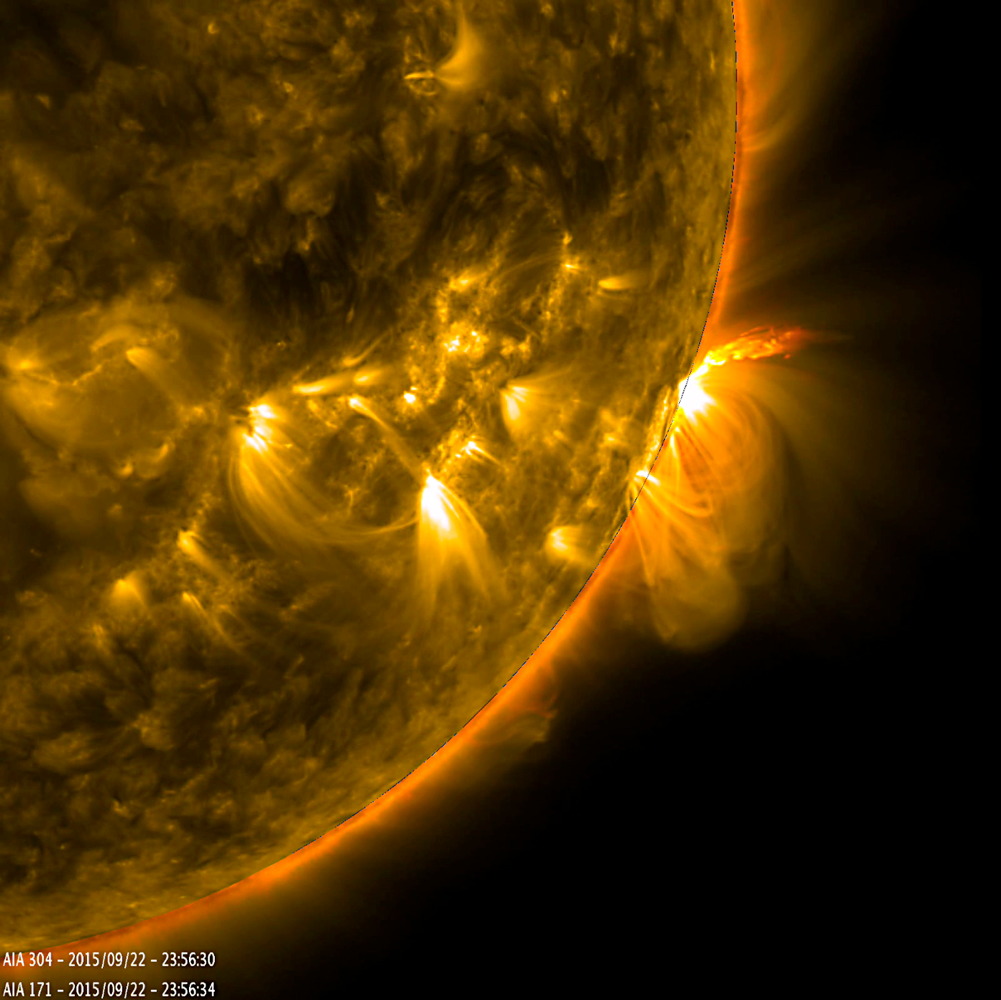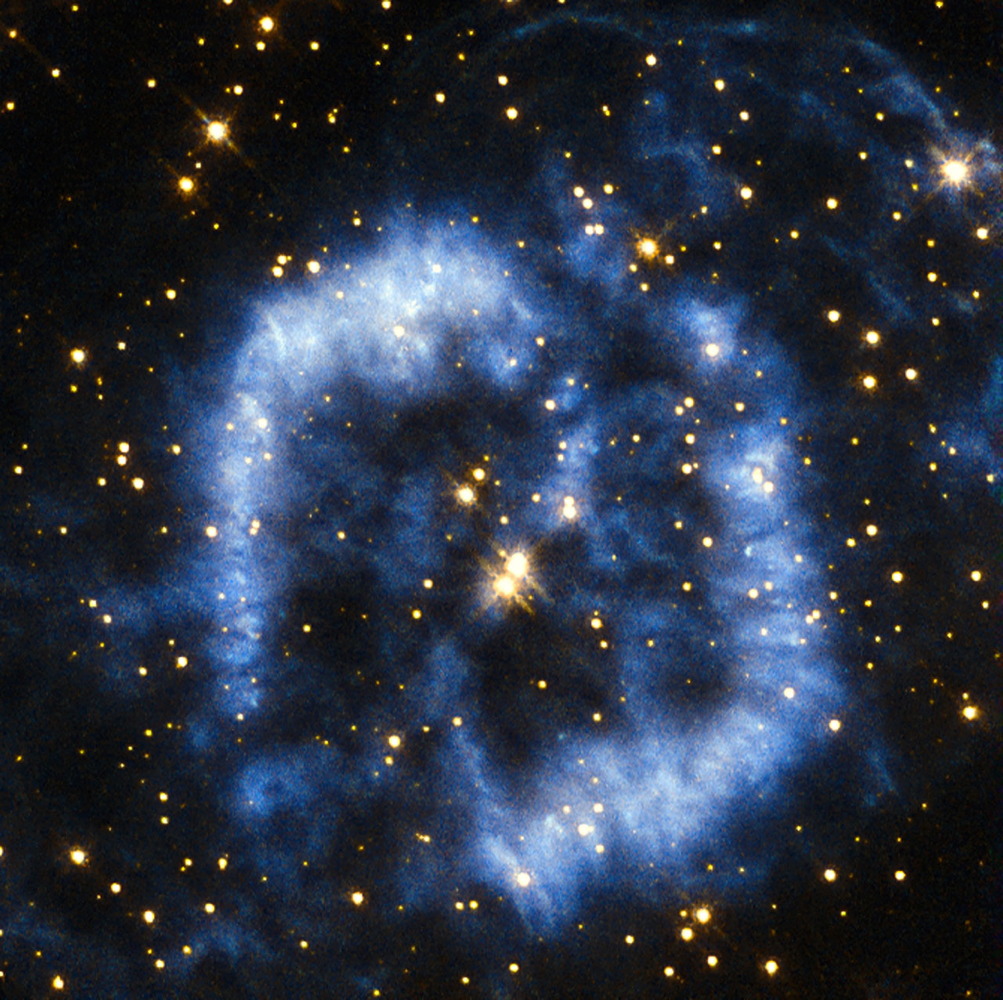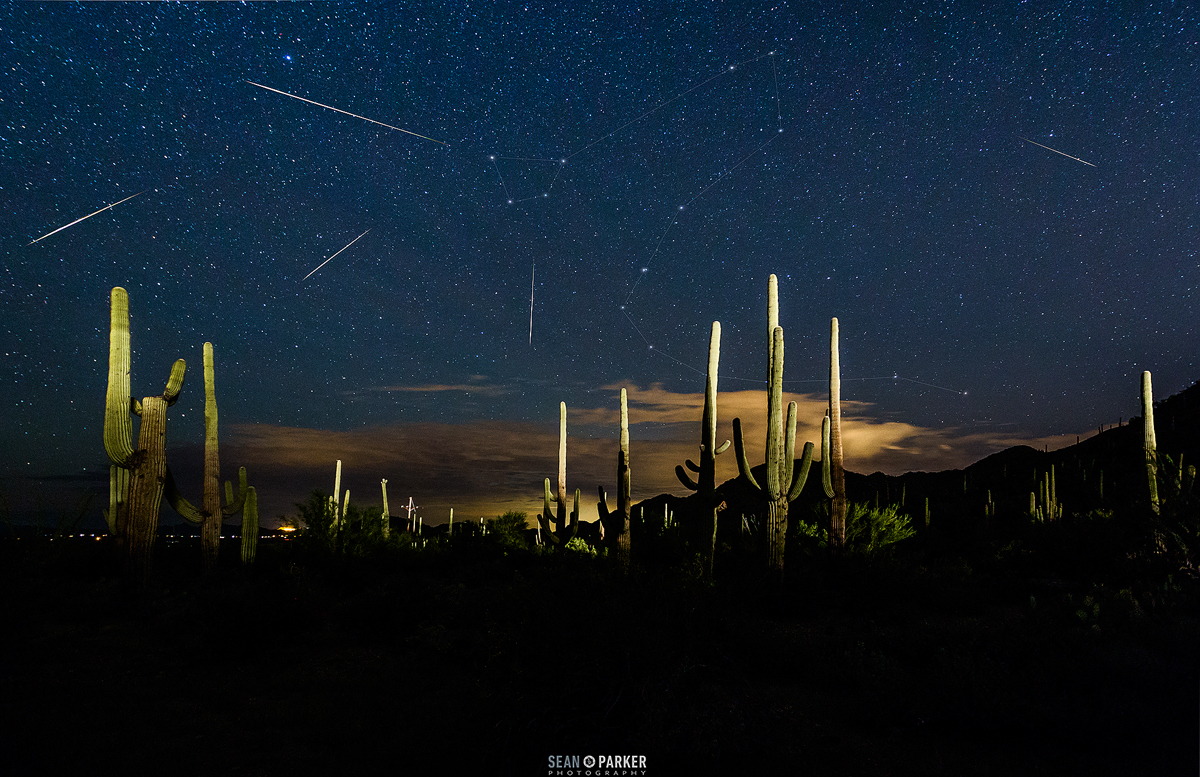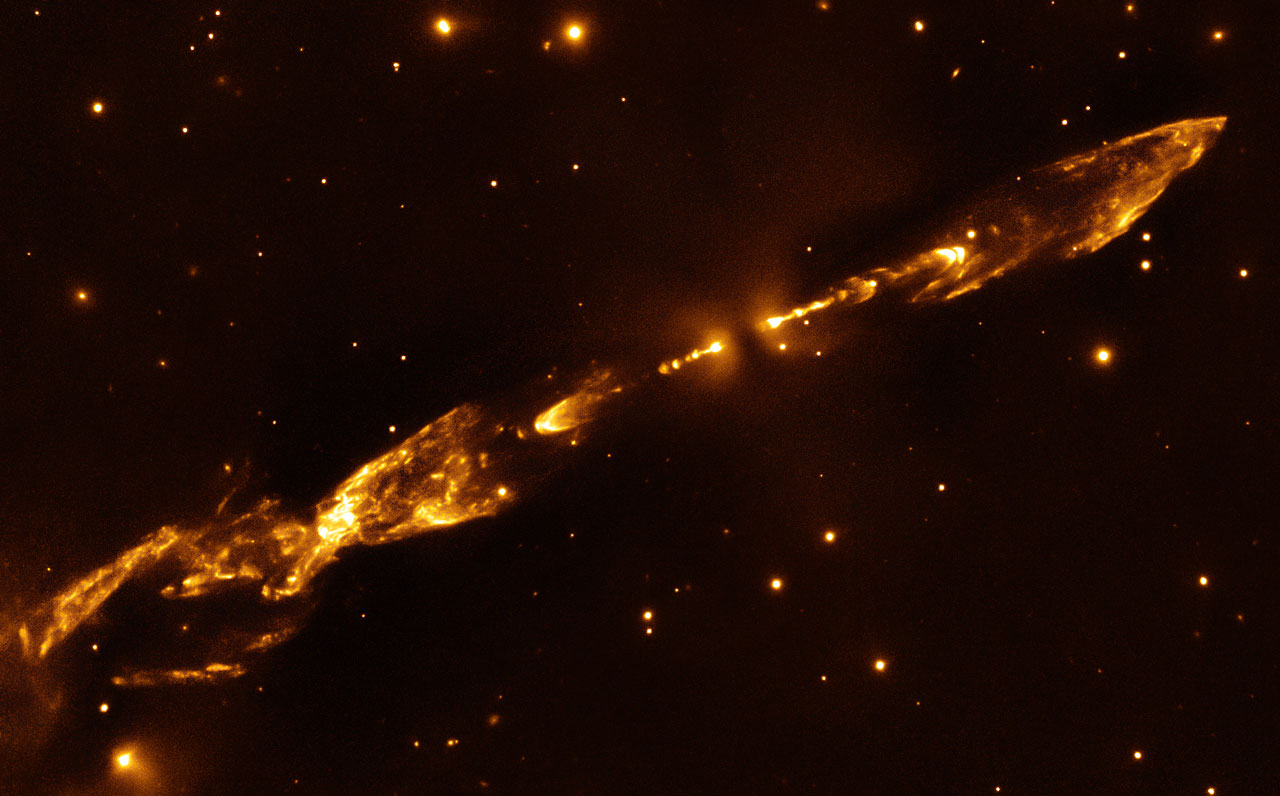Space Image of the Day Gallery (October 2015)
Image of the Day Archives
For older Image of the Day pictures, please visit the Image of the Day archives. Pictured: NGC 2467.
Hiding in Plain Sight
Thursday, Oct. 1, 2015: Astronomers classify galaxy NGC 613 as a barred spiral galaxy owing to the bar-shaped band of stars and dust crossing its glowing center. NGC 613's core has a bright white appearance in this image resulting from the combined light shining from the concentration of stars within, but at the center of this shining light hides a monstrous black hole which leaves no trace in the optical and infrared wavelengths used to take this image. NGC 613 floats 65 million light-years away in the constellation of Sculptor (The Sculptor). Image released Sept. 28, 2015.
— Tom Chao
Go East, Hurricane!
Friday, Oct. 2, 2015: The National Oceanic and Atmospheric Administration (NOAA) posted this image of Hurricane Joaquin obtained by its GOES West satellite on Oct. 1, 2015. They wrote on Facebook: "Many portions of the eastern U.S. are currently experiencing heavy rains and gusty winds associated with a frontal system. These heavy rains are likely to continue for the next few days, even if the center of Joaquin stays offshore."
— Tom Chao
The Arches
Monday, Oct. 5, 2015: NASA’s Solar Dynamics Observatory showed an active region on the sun in profile as plasma spurted out and arches looped above the surface, Sept. 22-23, 2015. In filtered white light, this region would appear as a sunspot group. Here, it was observed in a combination of two wavelengths of extreme ultraviolet light. Over roughly 40 hours, at least 25 shots of plasma emerged. The loops above the region consist of charged particles spinning along and illuminating magnetic field lines.
— Tom Chao
Mystery
Tuesday, Oct. 6, 2015: Globular cluster NGC 6553 lies approximately 19,000 light-years away in the constellation of Sagittarius. Astronomers have discovered a microlensing mystery in this field of view. In microlening, the gravitational field of a foreground object bends the light of a more distant object, creating an amplified image of the distant object. The object creating the microlensing effect in NGC 6553 bent the light of a red giant star in the background (marked with arrow). If this object lies in the cluster (and this object only has a 50 percent chance of existing), the object could be a black hole with a mass twice that of the sun, making it the first of its kind discovered in a globular cluster. It would also represent the oldest known stellar-mass black hole ever discovered. However, further observations must be made to determine the nature of this lensing object. Image released Oct. 5, 2015.
— Tom Chao
The Final Exit
Wednesday, Oct. 7, 2015: This planetary nebula PK 329-02.2 (AKA Menzel 2, or Mz 2) lies in the constellation of Norma in the southern sky. Planetary nebulas arise when sun-like stars reach the ends of their lives, and blow their outer layers of gas into space before the final stage of becoming a white dwarf. Menzel 2 shows a winding blue cloud with two stars at its exact center. Astronomers determined that the star at upper right is the central star of the nebula, and the other star to the lower left is probably the central star’s true physical companion. Image released Oct. 5, 2015.
— Tom Chao
Dreamboat Aurora
Thursday, Oct. 8, 2015: Astrophotographer Ruslan Merzlyakov caught an aurora over Sólfar, The Sun Voyager sculpture, in Reykjavik, Iceland, on Oct. 3, 2015. He writes in an email message to Space.com: "Last week I was in Iceland but the sky was cloudy all the time. But, suddenly, Friday night, right before my departure, the sky cleared out and beautiful northern lights began dancing all over the night sky. I took this image in the center of Reykjavik at the Sun Voyager (Sólfar in Icelandic).... As it says: Save the best for the last!" Sculptuor Jón Gunnar Árnason designed the steel "dreamboat," Sólfar, the Sun Voyager, which was installed in 1990.
— Tom Chao
Breaking space news, the latest updates on rocket launches, skywatching events and more!
The Blue Nile
Friday, Oct. 9, 2015: Astronaut Scott Kelly captured a view of the Middle East from the International Space Station and tweeted it on Oct. 8, 2015. Kelly wrote: "#MiddleEast. So much history, so much tragedy. #YearInSpace." The Nile river flows at left, while the Sinai Peninsula lies in the center of the image. The Red Sea stretches from lower right to center. Presently, Kelly is in the middle of a 1-year mission in space.
— Tom Chao
Dragon
Monday, Oct. 12, 2015: Astrophotographer Sean Parker sent in a photo of Draconid meteors taken during his night sky workshop in Tucson, Arizona, on Oct. 9, 2015. He writes in an email message to Space.com: "Composed of 1-hour timelapse with highlighted constellation and masked meteors."
— Tom Chao
The Jets Are in Gear
Tuesday, Oct. 13, 2015: A pair of jets shoot outwards with near-perfect symmetry from Herbig-Haro object (HH) 212. The object lies in the constellation of Orion (The Hunter) not far from the Horsehead Nebula. A young star only a few thousand years old lies at the center of the object, surrounded by an accretion disk of leftover material from the star’s formation, seen here edge-on. The star’s jets shoot out in a symmetric fashion, with several knots appearing at relatively stable intervals. This stability suggests that the jet pulses vary quite regularly, and over a timescale that may be as short as 30 years. The image was taken by ESO’s decommissioned Infrared Spectrometer And Array Camera (ISAAC), released Oct. 12, 2015.
— Tom Chao
There's a Big Black Hole Inside
Wednesday, Oct. 14, 2015: Barred spiral galaxy NGC 4639 lies over 70 million light-years away in the constellation of Virgo. This NASA/ESA Hubble Space Telescope image shows the bar running through the round core of the galaxy. About two thirds of spiral galaxies contain bars, considered a natural phase in galaxy evolution. NGC 4639 also contains a massive black hole in its core that consumes surrounding gas. Image released Oct. 12, 2015.
— Tom Chao
